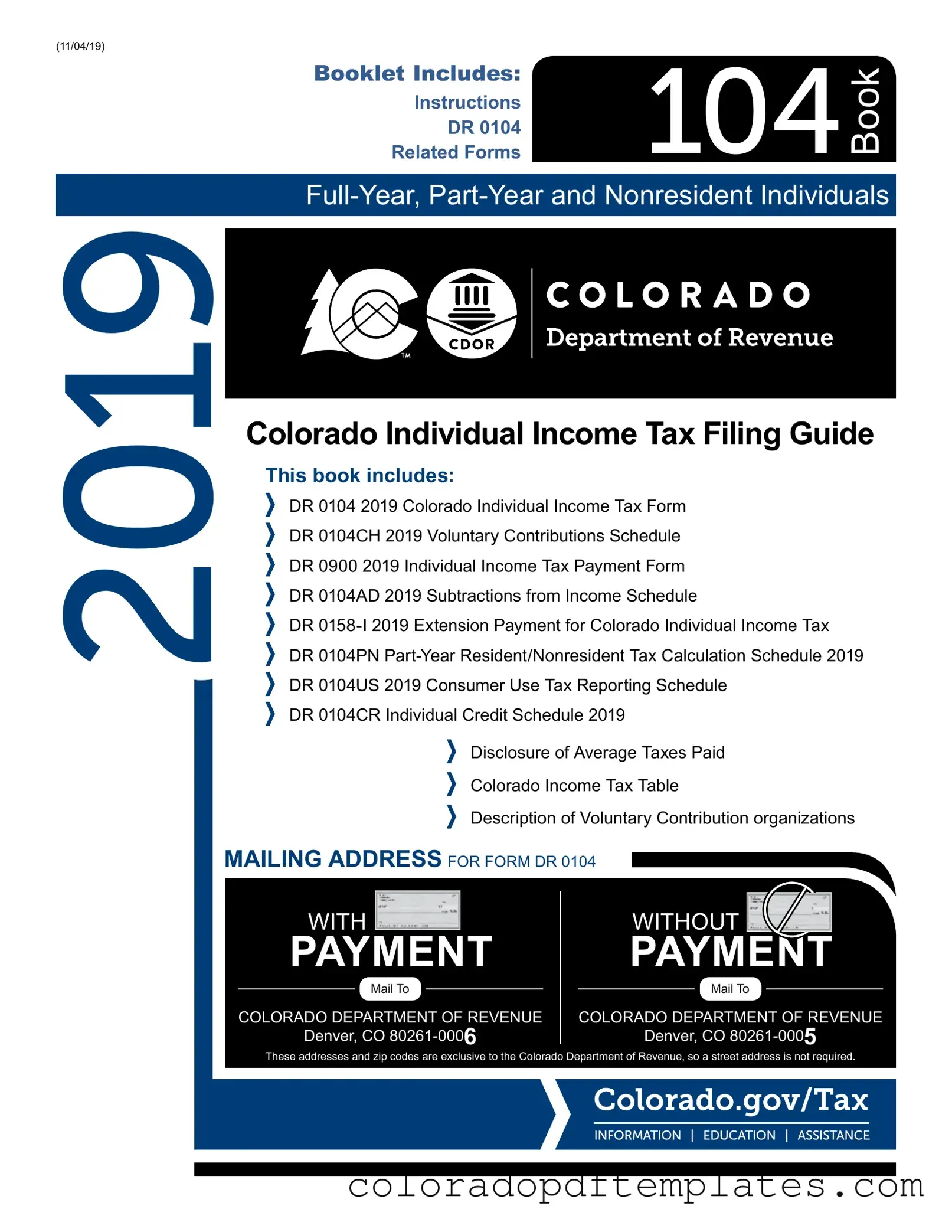The Colorado Tax Form DR 0104 is the official Individual Income Tax Return used by residents, part-year residents, and nonresidents to report their income and calculate their state tax liability. This form is essential for anyone who earned income in Colorado or is a resident of the state. Along with the main form, there are several related schedules and forms that may be required, depending on individual tax situations, such as the DR 0104AD for subtractions from income and the DR 0104CR for claiming tax credits.
Generally, you must file the Colorado Tax Form if you meet any of the following criteria:
-
You are a full-year resident of Colorado.
-
You are a part-year resident who received taxable income while living in Colorado.
-
You are a nonresident who earned income from sources within Colorado.
If you are required to file a federal income tax return with the IRS, you will also need to file the Colorado tax return, even if you do not owe any state taxes. Filing ensures that you can claim any potential refunds and that the state accurately assesses your tax situation.
The due date for submitting the Colorado Tax Form is April 15 of each year. If you need more time, an automatic extension is granted until October 15 for filing, but it's important to note that this extension does not apply to tax payments. Therefore, any taxes owed must be paid by April 15 to avoid penalties and interest.
What should I do if I cannot file by the deadline?
If you are unable to file your Colorado tax return by the April 15 deadline, you can apply for an automatic extension. This extension allows you until October 15 to file your return. However, you must pay at least 90% of your tax liability by the original due date to avoid late payment penalties. If you are abroad on the due date, you have until June 15 to file your return, with the same extension option available.
You have several options for submitting your Colorado Tax Form. The most efficient method is to file electronically using the Colorado Department of Revenue's Revenue Online service. This method reduces the chance of errors and speeds up processing. Alternatively, you can use private e-file software or hire a tax preparer. If you prefer to file by mail, ensure that you send the completed forms to the correct addresses provided for payment or no payment scenarios. Remember to include any necessary schedules and documentation to avoid processing delays.
